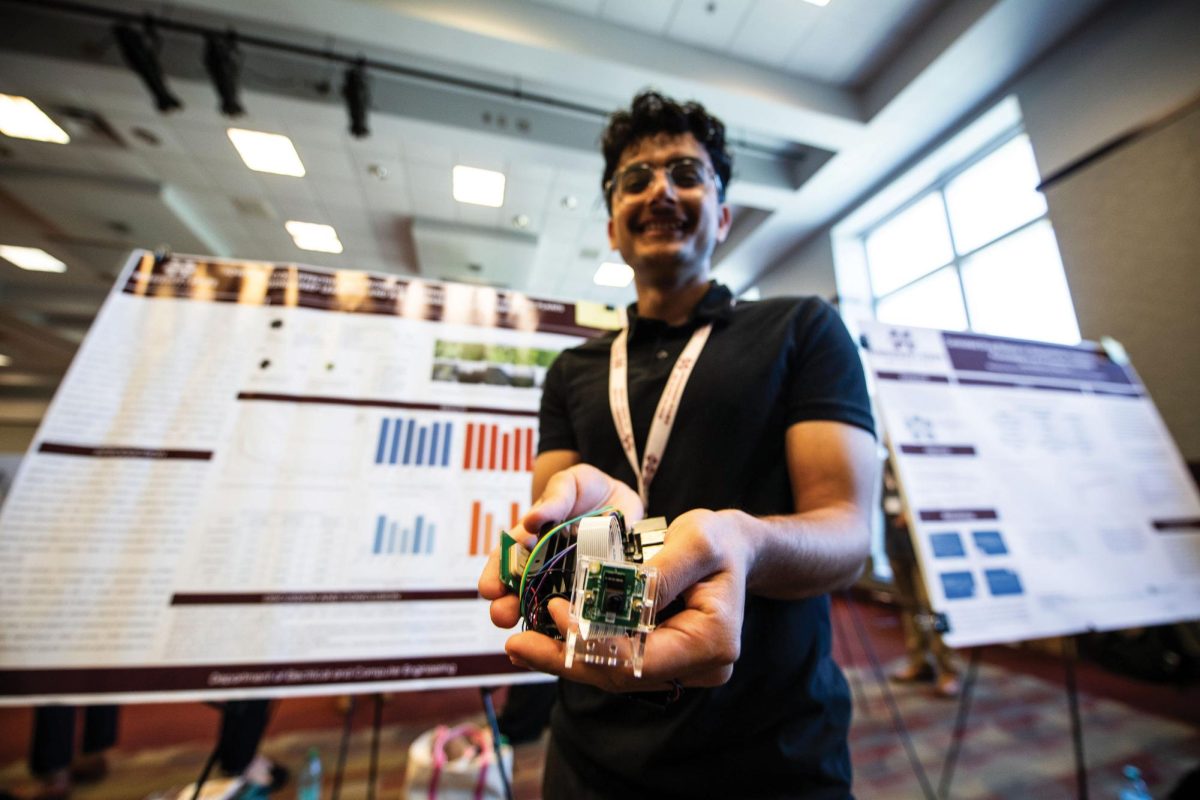While the inside of the Oktibbeha County Heritage Museum showcases the history of Starkville, Mississippi State University students transformed the building’s exterior and green space into the Golden Triangle’s most diverse collection of green — or environmentally sustainable — infrastructure facilities.
On Oct. 1, over 100 MSU students received the American Society of Landscape Architecture’s Award of Excellence in Student Collaboration for their unprecedented work at the museum. The students come from six disciplines, including landscape architecture, landscape contracting, architecture, building construction science, art and graphic design and volunteered to help make the heritage museum a sustainable building.
Hans Herrmann, assistant professor of architecture and an integral part of the Heritage museum project, explained the museum initially contacted MSU’s landscape architecture department with pragmatic concerns about water on its land.
“We were initially contacted by the museum for very practical reasons. They wanted our assistance in helping them with drainage problems caused by storm water,” he said. “They were always concerned that the building just sort of sits by the road, but it isn’t apparent that it is open. Due to an issue of sustainability, we worked to make the museum a green infrastructure.”
Herrmann said the students’ work solved drainage issues and also brought new life to the museum and increased its curb appeal.
“This was done not only to make the building more attractive, but also to increase the number of visitors to the museum,” he said. “It really made it apparent that the museum is open and things are actually happening there.”
The project consisted of five phases. Phase one began in spring 2009 and phase five finished in spring 2013. The museum now features a 700 square foot rain garden, a 200 square foot sand filter, an outdoor amphitheater, additional seating and food staging areas. The students also created a 1,000 gallon rainwater cistern using recycled or repurposed materials, information kiosks and a 600 square foot green roof pavilion that grows plants on the pavilion’s roof and includes a spiral staircase.
Cory Gallo, assistant professor of landscape architecture, said the number of students that participated in the project astounded him. Gallo said this was the first time such a diverse collection of green infrastructure technologies was used in Starkville.
“The biggest part of this project was the students and how they reacted to seeing that their contribution actually made a difference. It is amazing how many students actually contributed to completing the Heritage Museum project,” he said. “They gained a lot of experience through the design service-learning process and the mechanisms of design build. The uniqueness of it all was very rewarding.”
Katherine Ernst, senior architecture major, said she mainly worked on the circular staircase that leads to the pavilion’s green roof. Ernst said volunteering to increase the museum’s sustainability taught her about both environmentally conscious architecture and ways she can use her knowledge, even as a student, on full-scale projects.
“I gained a sense of what sustainable living really is and what it concerns. I had the opportunity to do something which I would like to pursue further in my career,” she said. “To actually utilize my abilities and, at the same time, to be able to know that I actually contributed to the project is rewarding in itself.”
John Thomas, senior architecture major, said he joined the design-build Oktibbeha County Heritage Museum class because he wanted to explore the field of construction assembly, and he gained a sense of what it means to serve his fellow Starkvillians.
“It was all about construction assembly, and that’s why I joined the class. Actually being a part of construction and having that hands-on experience from start to finish really gave me confidence,” he said. “It was highly rewarding to see that we could come together and give back to the community of Starkville.”
Community support played a critical role in the project’s completion. Herrmann said many local contributors supported the project and provided used materials to make the pavilion a possibility.
“Countless materials were donated and with everyone’s support a project that potentially would have cost over $100,000 was completed in roughly $18,500,” he said.
The awards of excellence are the highest honor the American Society of Landscape Architecture bestows. Gallo said the recognition this honor brings improves MSU’s landscape architecture program’s visibility on a national scale. Gallo said the project also allowed students to understand the impact their work can have and will pave the way for possible future design-build projects.
“It was a very humbling experience for the students to be involved in giving back to their communities,” he said. “Although nothing has been set in stone as yet, hopefully there will be a new project in the future to get the students involved and benefit the community.”








